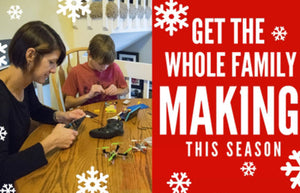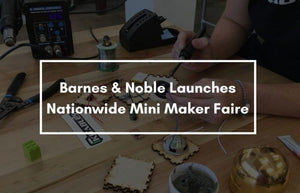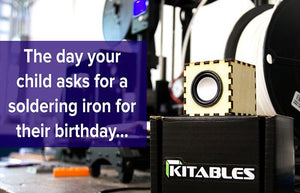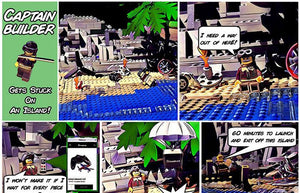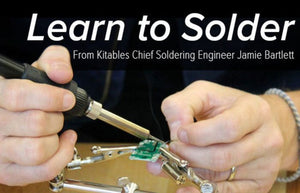Learn to Solder From Kitables' Chief Soldering Engineer Jamie Bartlett
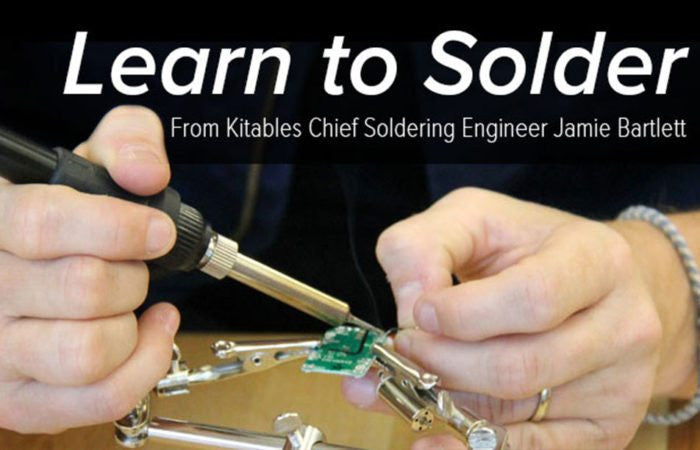
What the Flux?
If you’ve decided to read this, you’re probably new to soldering, an activity that often shows up in our kits. Soldering is simply gluing with metal so you can conduct electricity. While it might sound a bit scary working with molten metal, do not fret, you should only burn your finger tips a couple of times.
Think of the process just like cooking. First, you need the right tools. Cheap tools are ok, they can get the job done (like a crappy stove or IKEA pot) but, if you plan to do this on more than one occasion, get a few nice pieces. It will increase your chance of success and impress your maker friends.
Second, you need to collect the right ingredients. Similar to your tools, you can get by with cheap ingredients (a la steaks from the dollar store), but obviously, hitting the organic aisle will clearly make you a better person.
Third, you need the right recipe to put this whole thing together.

Tools:
The most essential tool is your soldering iron. The name iron simply implies something gets hot on the device — you cannot use it on your clean laundry. A soldering iron is essentially a stick with metal on one end (no touching) and insulated material on the other (touching is ok). The insulated end has a plug that directs electricity to the metal end. The hot end gets hot enough to melt your soldering material. There are numerous iron reviews out there, so we won’t do that here. Here are a few links we like.
http://www.instructables.com/id/How-to-Pick-the-Best-Soldering-Iron/
http://airtoolguy.com/best-soldering-iron-reviews/
Other tools include wire strippers (to expose your wire ends), heat gun (to shrink heat wrap around exposed wires), tip cleaner (to keep your soldering tip clean) and goggles (to sit on the desk next to you).

Ingredients:
Solder – a metal with a relatively low melting point (this way you don’t melt the parts getting stuck together). Solder is typically composed of tin (60%) and lead (40%). Solder looks like a gray wire that’s super soft and easy to bend. The best kind of solder (AKA organic ingredients will have a rosin core. This core is also known as flux. Flux melts before the surrounding metal ingredients and helps the metal flow. You might see flux in a little container — it looks like gray pudding — think of it like cooking oil, sometimes you need a little to properly conduct heat to your food.
Lead versus Lead-Free solder – Because of the known toxicity of lead (the fumes are a major irritant), you can get lead-free solder. lead-free solder sounds great…but it’s not as perfect as you’d hope. Lead-free solder is more difficult to work with and it often contains other chemical irritants. It can also corrode and ruin your soldering iron tip. You can make your choice as you get more familiar with their ease of use.

Recipe:
Your recipe will depend on your end goal. The best advice is to follow someone’s clear instructions (like Kitables!) so you can focus on soldering technique and not which wire goes where. Things you can solder together include wire to wire, wire to board, wire to component, component to board. Ultimately, your recipe will contain the right pathway for electricity to flow.
Cooking Tips:
Less is sometimes more. Globs of solder can inhibit the conduction of electricity and it might send electrons to areas you don’t want to send them.
Here are a couple links we like for more tips:
http://mightyohm.com/files/soldercomic/FullSolderComic_EN.pdf
Read about tinning here, it will help smooth out your soldering joints.
If you’re thinking about soldering and just want to start making stuff, we say Go For It. You will make mistakes. You will burn your fingertips. You will have to resolder things again. But, we promise each time it gets a little easier. Start with a Kitables Kit. We give you a good recipe to follow, you just need to be motivated to cook!
- Kitables.co Admin

